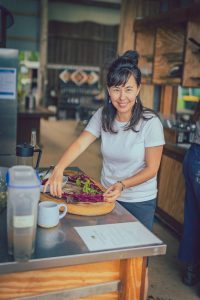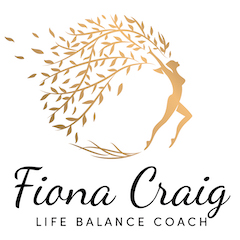By Guest Blogger Kimberly Ashton
We have all heard of the saying “let thy food be thy medicine, and thy medicine be thy food” and we know on some level it is true, but how do we actually embrace that in our daily life?
How we were brought up and relate to food is a wonderful backdrop to begin to understand how we each individually think about food, meals, cooking, our bodies and health.
Did you grow up in a household that sat down to dinner together every night or once a week? Were meals cooked by your mum, dad, siblings or grandma? Were meals take-away food, fast food or frozen meals? How was your family’s general approach to food and health?
None of the answers to these questions are good or bad, right or wrong, but they shape the way we approach meal time, grocery shopping, cooking and think about eating and therefore relationship with our bodies.
Our body wants to rebalance us at every moment, every day, week or month and we can do this when we realise that “food” is not just macronutrients or micronutrients, but is part of the world around us, and creates and recreates us each and every day. With each mouthful, we can shift our relationship with food to one that is positive, cultivating health and nourishing, we can give ourselves the therapy that food innately brings.
I invite you to stay curious and open with your beliefs and patterns of thinking around food, much of it is from our childhood, also media and social conditioning, and programming by food companies. Food has always gone through phases and trends, one day its “low fat” the next “ketogenic diet,” today flax seeds are deemed the best super foods and tomorrow it’s acai berries. This can cause a lot of confusion in our relationship with food, however, if we go back to basics and look at food as the building blocks to ourselves, we can reframe things and apply some food wisdoms.
FOOD IS MEDICINE
Food in traditional wisdom cultures, and increasingly in Western nutrition, is seen as more than just nutrition or fuel. The shift away from purely seeing food from a reductionist point of view as calories, grams, vitamins, isolated minerals and ingredients, towards more holism and the whole vegetable, whole grain, whole animal, whole bean, whole fruit and whole food is happening.
Food, or should I say natural and fresh food, has a connection to the earth and environment we live in, and this allows us to see that food is literally therapy and medicine for our bodies and minds.
Nature has by design always offered and provided us what we need and reconnecting and tuning back into the cycles of nature will allow us to shift into new paradigms of food being our medicine. Food medicine doesn’t come in a box, processed meal with a long list of ingredients, a super pill or powder. Food as medicine doesn’t have to be fancy, or superfoods or unattainable, we can start simply with our daily foods and adding in the basics to create our own therapy for what we need.
Seasonal & local foods
- Eating fresh seasonal vegetables, fruits, whole grains and proteins offers naturally nutrient dense and healthful benefits.
- Foods out of season or imported from far away are often from the opposite season and have been processed with chemicals, preservatives and/or are not fresh and wholesome.
- By eating in season and not the same foods all year around we sync with the elements, weather, climate around us and allow our bodies to manage the ebbs and flows of the seasons and also our stress and emotions.
- Variety is an important point if you want food to start becoming more healing for you. A wide variety of fresh whole foods will ensure you automatically get lots of vitamins, minerals, nutrients, fiber.
Functional foods- with therapeutic benefits
- This category is not just “superfoods” that are trendy in your local health food or organic store, though many of them are fantastic for functional purposes, but the good old ingredients from every traditional food culture. For example seaweed from Japan is a highly nutrient dense food, or Chinese red Jujube dates are excellent for women’s health and nourishing the blood.
- Some others include goji berries for vitamin A and blood nourishing, black rice for kidney health, walnuts for the brain and omega 3, yams and taros for the spleen and stomach.
- Teas and tonics that are prevalent in South America, Europe, Africa, Asia, Russia, Australia, that use native flowers, plants, herbs, and roots are highly beneficial for staying healthy or for more balanced hormones and mood.
- Many ingredients that we may not be so familiar with can actually easily added to our breakfast, lunch or dinners, and help with what we need at a certain point in time.
Herbs & spices
- Simple herbs and spices such as oregano, turmeric, basil, marjoram and cinnamon can offer health benefits. They all have their own properties for warming, helping with inflammation in the body and/or spleen and stomach health, and when added in moderation in daily cooking can contribute to better digestion and health. When we learn how to use herbs and spices they can make a big difference.
- Adaptogens are a category of herbs, leaves and roots that give us energy, soothe the kidneys and nourish the adrenal glands. They are one of the most popular way to use “food as medicine.”
- Peppermint is a good one for cooling the liver and helping many of us with fire and heat in this organ system which contributes to emotions of anger, frustration, impatience and over controlling ourselves, thoughts, emotions, situations and other people.
Energetics of food
- Understanding that food is energy is a key principle because when we understand that root vegetables give us different nutrition and nourishment than leafy greens, or beans or brown rice, we can then feel into our seasonal meals and use food to help us achieve better health, mood and sleep.
- Examples include using root vegetables during times of stress and needing to calm down and be more grounded. Or adding in more leafy green vegetables, leeks, lotus root and daikon radish to cleanse and uplift the liver and lungs.
- We can also apply the energetics to cooking methods, which is a big topic, the basis of it being that we can cook foods in different ways for a different outcome. For example if we are highly stressed, uptight, holding a contracted state in the body with lots of tension then eating baked meals, dried crackers and grilled foods aren’t going to help us relax. Perhaps some steamed vegetables, meats, or fish would be a better option, as would puddings, soft creamy foods, and sweet vegetables such as pumpkin, sweet potatoes and millet, all foods which help the spleen and stomach literally relax and find comfort and ease.
There is so much wisdom and “medicine” out there in the world of food ingredients and cooking, it is an exciting time to explore and learn more, perhaps call upon more of our grandma’s for their recipes and teachings. The notion that connecting with our food and applying functional foods into our daily lives is making a comeback and it is time for the food-nature-medicine paradigm to return.
 Kimberly Ashton is a Wellness coach focusing on the 5 Elements, holistic nutrition, food therapy, food energetics and emotional & metaphysical anatomy. She is passionate about empowering people to explore the connection between Food, Emotions and Energy layers of the body in her private sessions, e-books and online courses.
Kimberly Ashton is a Wellness coach focusing on the 5 Elements, holistic nutrition, food therapy, food energetics and emotional & metaphysical anatomy. She is passionate about empowering people to explore the connection between Food, Emotions and Energy layers of the body in her private sessions, e-books and online courses.
To sign up to her 5 Elements & cycles online course CLICK HERE. For more information please visit: www.qifoodtherapy.com or connect on Instagram @qifoodtherapy
* The contents of this article are only of personal opinion and a general view on food and nutrition, the contents do not constitute as medical advice or nutritional advice, please consult your healthcare professional before undergoing any diet, dietary change or trying functional foods and herbs.














